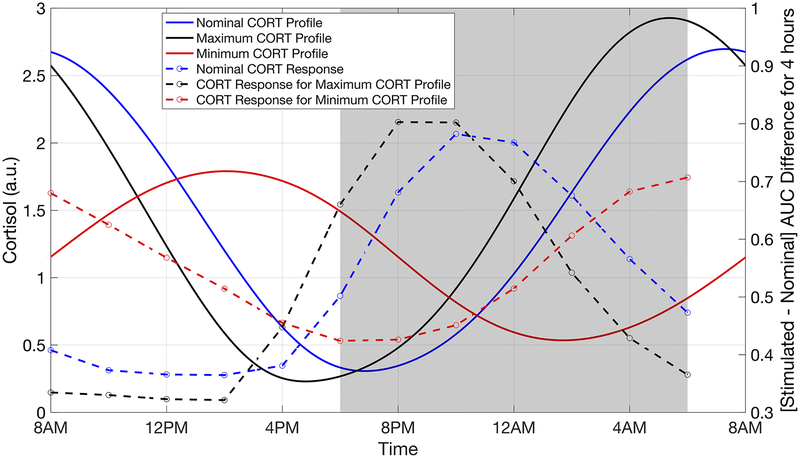Fig. 9:
Influence of once-daily chronopharmacological dosing of synthetic GCs on the responsiveness of the HPA axis to CRH stimulation. The cortisol response due to simulated IV administration of the CRH is compared for the nominal cortisol profile without dosing (black), the cortisol rhythm with maximal amplitude (blue) after once-daily chronopharmacological administration of synthetic GCs, and the cortisol rhythm with minimal amplitude (red) after once-daily chronopharmacological administration of synthetic GCs. Cortisol (CORT) concentration is given in arbitrary units (a.u.). The response to CRH stimulation was determined at 2-hour intervals for each of the cortisol profiles (represented by circles). A time-of-day dependent response is observed for all profiles. A reduction in the amplitude of the cortisol rhythm is associated with a partial loss in the time-of-day dependence of the response to CRH stimulation, while an increase in the amplitude is associated with a more pronounced time-of-day dependence of the response.

